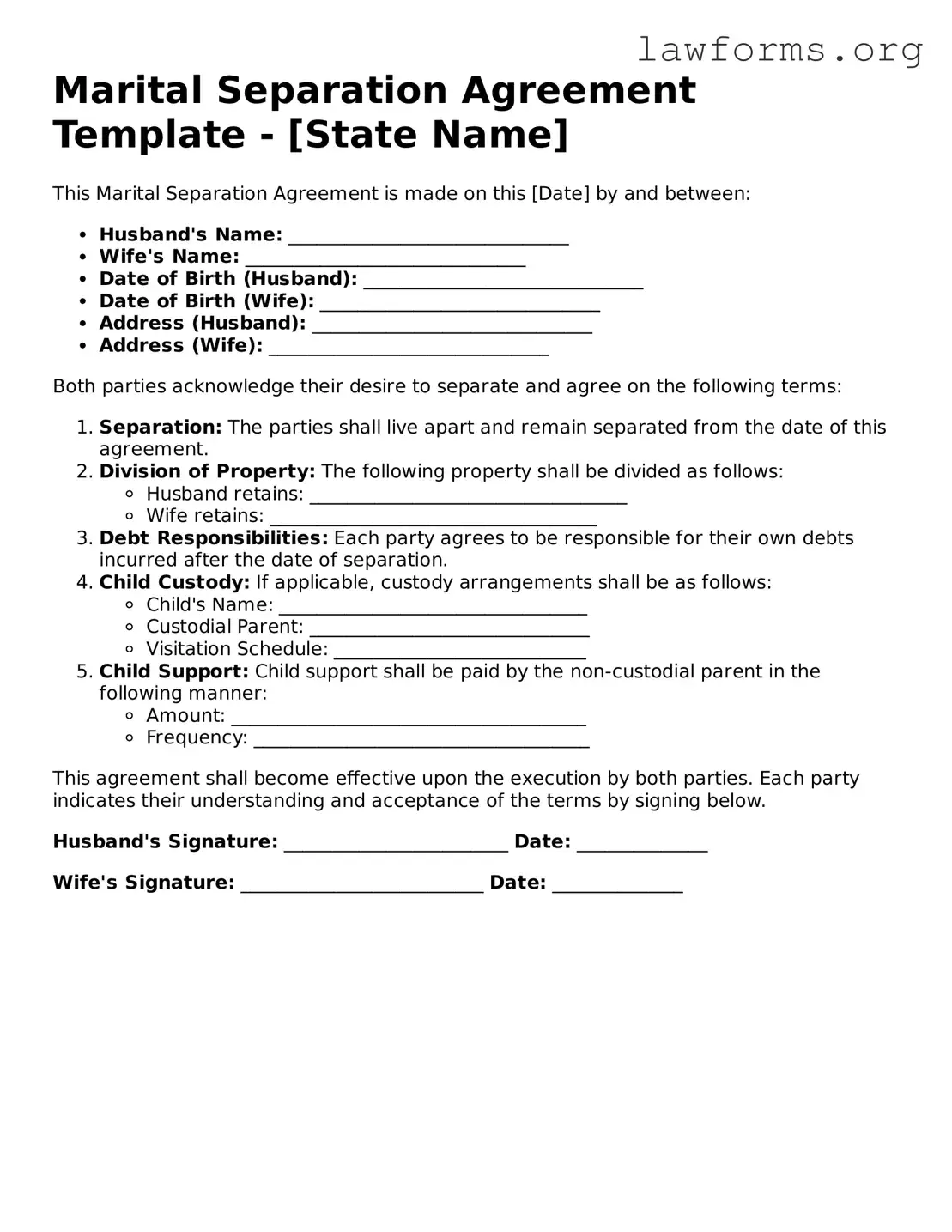Marital Separation Agreement Template - [State Name]
This Marital Separation Agreement is made on this [Date] by and between:
- Husband's Name: ______________________________
- Wife's Name: ______________________________
- Date of Birth (Husband): ______________________________
- Date of Birth (Wife): ______________________________
- Address (Husband): ______________________________
- Address (Wife): ______________________________
Both parties acknowledge their desire to separate and agree on the following terms:
- Separation: The parties shall live apart and remain separated from the date of this agreement.
- Division of Property: The following property shall be divided as follows:
- Husband retains: __________________________________
- Wife retains: ___________________________________
- Debt Responsibilities: Each party agrees to be responsible for their own debts incurred after the date of separation.
- Child Custody: If applicable, custody arrangements shall be as follows:
- Child's Name: _________________________________
- Custodial Parent: ______________________________
- Visitation Schedule: ___________________________
- Child Support: Child support shall be paid by the non-custodial parent in the following manner:
- Amount: ______________________________________
- Frequency: ____________________________________
This agreement shall become effective upon the execution by both parties. Each party indicates their understanding and acceptance of the terms by signing below.
Husband's Signature: ________________________ Date: ______________
Wife's Signature: __________________________ Date: ______________
